Let’s start with a request; a plea, even. Forget the Tata Aria. It’s something Tata Motors wants you to do, and, after spending some extended time with the new Tata Hexa, it’s something we’d encourage as well. Yes, the similar silhouette and a few carry-over bits are hard to ignore, but the sheer depth of improvement that’s gone into this car elevates it to something far greater than a mere facelift of the Aria.
In the interest of balance, however, we’d also like to remind you of what Mahindra did to the XUV500 in 2015. No name change or drastic engineering overhaul here – just a more conventional facelift; but the raft of little changes, both cosmetic and technical, ironed out so many of the car’s niggles that it finally felt like the car it always should have been, and this really showed that Mahindra was listening to feedback.
And finally, just a reminder that the last time Tata and Mahindra went head-to-head in this segment, the Hyundai Creta, Renault Duster AWD, Honda Mobilio, Hyundai Tucson and Toyota Innova Crysta weren’t around to complicate matters; but they are now, so our local heroes have that much harder to work if they want to impress buyers. Despite that, this is still a grudge match between two rival Indian carmakers, and this head-to-head test is the one that will settle it.
Strike a pose
As we said before, if there’s one visual factor that’s been carried over from the Aria to the Hexa, it’s the MPV-like glasshouse, which, unfortunately, etches the word crossover – not SUV – indelibly into your brain. But you can’t fault Tata for not trying; it does look a lot more SUV-like. The bonnet is taller and more upright now, with a clamshell opening, squared-off edges rather than soft round ones, and a nice hexagonal pattern to the upper and lower grilles. And grey plastic cladding – it’s everywhere! On the bumpers, along the sides, lining the wheel arches and around the rear, and we particularly like the LED parking lights that poke out of the front bumper. At the sides, Tata has been wise to stay away from excessive cuts and creases, and stick with straight lines, cladding, and a lovely chrome strip along the window line with the ‘Hexa’ badge notched into a ‘fin’ on the C-pillar. You also get rather fetching 19-inch wheels but they look a bit sunken in the massive wheel wells. The rear is perhaps the least interesting angle, but it too has a few nice details, like the thick band of chrome, faux diffuser and twin hexagonal tailpipes.
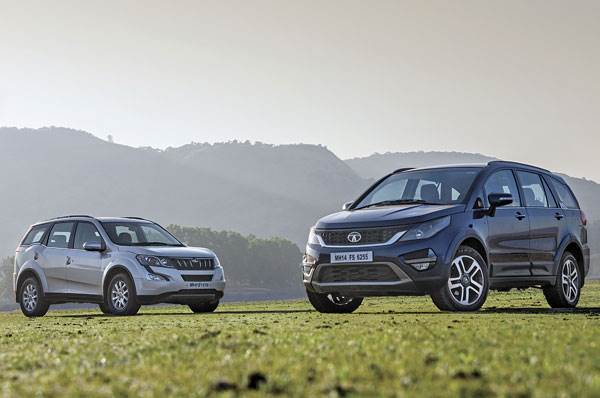
While Tata’s designers added drama to liven up a dull design, Mahindra’s designers actually – thankfully – toned the XUV500’s styling down a notch, and it really works. The new grille now sits flush with the headlamps, themselves imbued with a new layout and LED accents. The front bumper is new, and the gimmicky ‘cheetah whiskers’ have mercifully given way to simpler ‘slits’ that house the fog lamps. On the sides, all that’s new are the alloys, which again look more modern, and at the back, you’ll find a thick chrome strip on the tailgate and fewer tribal motifs in the tail-lamp glass. The interesting bit is that though the Hexa has the more traditional SUV ladder-frame construction, it’s the monocoque XUV500 that has the more traditional SUV look.
Good luxe
The XUV500’s subtle-fication continues on the inside, where the polarising plum-grey-black-and-beige colour scheme has been scrapped for a more conventional beige-and-grey. The dials glow a cool shade of blue now and their shroud is better integrated with the dash. The result is that it looks a lot more mature now, and it better disguises some of the poor plastics, of which there are still quite a few, such as the air con vents and the dashboard top itself. Still, it remains a well-thought-out interior with lots of useful storage bays and cubbyholes (the door pockets are a touch too slim though), and we really like the larger touchscreen they’ve used for the infotainment. However, despite all the changes, it still lacks that richness or feel-good factor that you expect from a car in this segment.

There was only so much Tata could do with the Hexa’s exterior, but on the inside, they’ve really gone to town. The dashboard design is so fresh, you can barely associate it with any other Tata, and fit and finish has taken a quantum leap forward. There’s a nice mix of glossy black and dark matte silver placed tastefully around the cabin, and it does a much better job of imparting a premium feel than the Mahindra. Some might find the all-black colour scheme a touch too dour, especially given the sheer vastness of the cabin, but it’s balanced out by the smart design, and it also helps disguise some of the panel gaps. However, get to a toll booth and you’ll notice one big flaw in the design; there’s no place to put your change. Yes, the co-driver gets two gloveboxes and a recess above them, but the driver just gets one cupholder, and that will end up being used for their phone, tickets, wallet, change or an actual cup. The door pockets are at least big enough to house litre bottles and there is a small bin under the armrest, but a few more cubbyholes wouldn’t have gone amiss.
Vanity vans
From the driver’s seat, the Hexa feels every bit the old-school, ladder-frame SUV, which is to say it’s a bit of a climb into the cabin, you’re sat very high up and the steering wheel is angled a bit more forward than in a regular car. General visibility is very good, but there’s also a slight blind spot around the A-pillar, and you’ll notice there’s no room for your clutch foot, let alone a dead pedal, thanks to the seriously wide transmission tunnel.

The XUV500 is a bit friendlier that way, with a lower, more car-like driving position, and, though forward visibility is good, the view out the back is poor thanks to the tiny rear window. The gear lever falls easier to hand and the ergonomics just feel a bit more natural. The seats are really good too, with ample support, lumbar adjustment and six-way electrical adjustment for the driver. The Hexa’s seats aren’t powered, but they are superior in every other respect. Not only do they offer better support in every direction, but their cushions feel plusher and softer than the Mahindra’s.
This continues in the second row, where, again, the XUV’s seats are in no way bad, but the Hexa’s are just better. Middle-row passengers in the Tata have the advantage of pull-up sun blinds, and they’ll also like the additional set of AC vents that sit between the front seats (the XUV only gets a pair in the B-pillars). Although, they’ll like them a little less when it comes to tumbling forward the heavy middle row because the vent console gets in the way and blocks the seats from folding all the way. The XUV appears to have a bit more space in the second row, but that’s actually down to its better use of vertical space. It is placed quite a bit higher than the first row, so, not only do your legs get a bit more room to stretch out, you also get a better view forward.
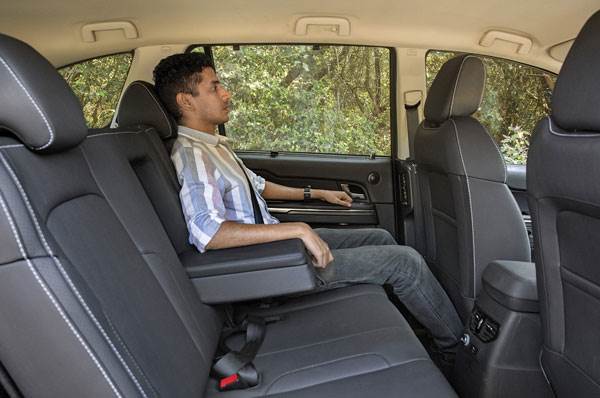
Both SUVs’ middle rows split, recline, fold and tumble for convenience, but when it comes to accessing the third row, the XUV500 has an edge, as it’s lower to the ground and there’s more room to wiggle yourself through. Owing to its huge rear wheel arches that eat into the door area, clambering into the back of the Hexa is quite a task, but once you’re there, again, it’s these seats made with materials used in European luxury cars that feel plusher. There’s no great space advantage in either car; you can free up a bit more knee room in both by adjusting the middle row’s backrest angle, but just the shape of the seating area and the softer cushions make the Tata’s third row the nicer place to be in.
In the luggage department, it’s really no contest. The XUV500 with all its rows up has almost no boot space to speak of, and you’d be lucky to get even one small soft bag in, whereas in the Hexa, you can easily fit a medium-size suitcase, once you’ve hauled it over the rather tall loading lip. And how does the Mahindra claw back an advantage? Equipment. Sure, the Tata has got goodies like a 10-speaker JBL sound system and a USB charging point for the second row, but its touchscreen is small and not very responsive. The XUV’s larger updated touchscreen is slick – a huge improvement on the first one – and packs in loads of features, including a detailed fuel computer and tyre-pressure monitoring. It’s also got a number of other equipment advantages like keyless entry and go, navigation, telescopic steering adjustment, a mild-hybrid system and, most of all, a sunroof.
Running the runway
Just as with the way they look, these two couldn’t be more different to drive, and that’s because they’re so differently constructed. In the Tata Corner, you have the company’s hydroformed ‘X2’ ladder-frame platform, armed with a longitudinally-placed engine and rear-biased 4x4. From Mahindra, you have a significantly lighter monocoque chassis with a transversely-mounted motor and front-biased AWD. What they have in common, on paper at least, is the use of 2.2-litre diesel engines and six-speed manual gearboxes. They both get automatic options too, but that’s a comparison for another time.
Tata’s latest ‘Varicor 400’ iteration of this motor punches out a meaty 156hp and 400Nm, which is a fair bit more than Mahindra’s 140hp and 330Nm, so of course, the Hexa is quicker, right? Wrong. Owing mostly to its immense, near-2.3-tonne weight (almost 500kg more than the XUV), the Tata is almost 2sec slower to 100kph than the Mahindra, and at 120kph, they’re a full 3.6sec apart! The other thing you have to consider is that the Hexa’s motor does all its work in the first half of its rev band, and then it’s best to shift up. The XUV’s motor, in comparison, is a lot freer revving, and you wouldn’t mind winding it open to its redline if you’re in a hurry. However, despite all that weight, the Tata Varicor 400’s ocean of torque and shorter gearing means it fares better in roll-on or in-gear acceleration, which helps in overtaking. Neither SUV is very refined, but the Tata comes out on top, not just on engine noise, but overall insulation as well; road and wind noise are far better shut out.

Both cars make for great highway cruisers with their tall sixth gears and pretty solid road manners (the Hexa feels better planted at high speeds), but the differences really show in town, or on a mountain road. You can feel every one of the Hexa’s kilogrammes thanks to its heavy hydraulic steering that makes U-turns a lot of work. Then there’s the heavy gearshift, which has a wide gate and doesn’t slot in easily, and that’s after you’ve gotten past the clutch which feels heavy and not at all progressive. This ‘step’ in the clutch pedal’s travel means it’s hard to get off the line smoothly and making progress at crawling speeds is a jerky affair, although selecting the available ‘Dynamic’ mode unique to the Tata helps this a bit. The Mahindra isn’t perfect either, with a slightly clunky gearshift of its own, but at least the shift action is light. Also light is the electric power steering, which makes it so much easier to manoeuvre in traffic.
Introduce the prospect of a mountain road and things get a bit more complex. The XUV500’s monocoque chassis, freer revving engine, lower centre of gravity and light steering initially seem like the recipe for a corner carver, but you soon realise that the steering is disconcertingly inconsistent in the way it weighs up. There’s a huge amount of torque steer too, so you can feel the steering fighting in your hands when powering out of corners, which means the XUV doesn’t steer into corners predictably. On the same stretch of road, the Hexa feels big, cumbersome, and top-heavy. However, the tyres offer up a lot of grip, and, combined with the more solid-feeling steering, it does at least give you a lot of confidence, if not excitement.
Where the Hexa really hits a home run, however, is ride quality. It manages to pummel out all manner of road imperfections at all speeds. The Mahindra can get a bit choppy at times, which you’ll feel the most in the third row, and it will crash over sharp bumps that the Tata will just sail over.
Homegrown heroes
So it’s close. Very close. Ever since the Tiago, we’ve known Tata is onto something big with its upcoming wave of new models, and the Hexa really takes the brand into new, properly premium territory. That’s something Mahindra did too when it launched the XUV500, and that original formula has since been refined with great effect. The XUV500 doesn’t feel as well-built, and, in terms of comfort, it’s not quite as good as the Tata. Still, it does manage to outshine it in some crucial areas, like ease of driving, fuel efficiency and equipment.
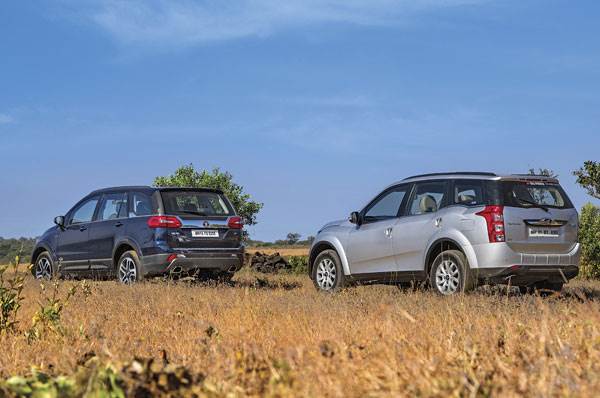
Despite our plea at the start to forget the Aria, it’s the Hexa’s links to its past that let it down. Its weight and heavy steering make it cumbersome to drive in town, and foibles like the clutch and gearbox don’t help either. But where Tata has gotten things just right is on the all-important feel-good factor. What’s more, at Rs 17.49 lakh (ex-showroom, Delhi), the Hexa XT 4x4’s price just slips under the XUV500 W10 AWD’s by Rs 11,000, though it’s important to remember these prices are only introductory. The Hexa is more refined and superbly built with lots of detailing, and the interiors, especially the seats, are something for Tata to really be proud of. It scores high on space and comfort, and its tough underpinnings give it a go-anywhere ability. In a hotly contested segment where image, presence and premium feel play a very important role, these are the things that matter more, and that’s why the Hexa is our pick.
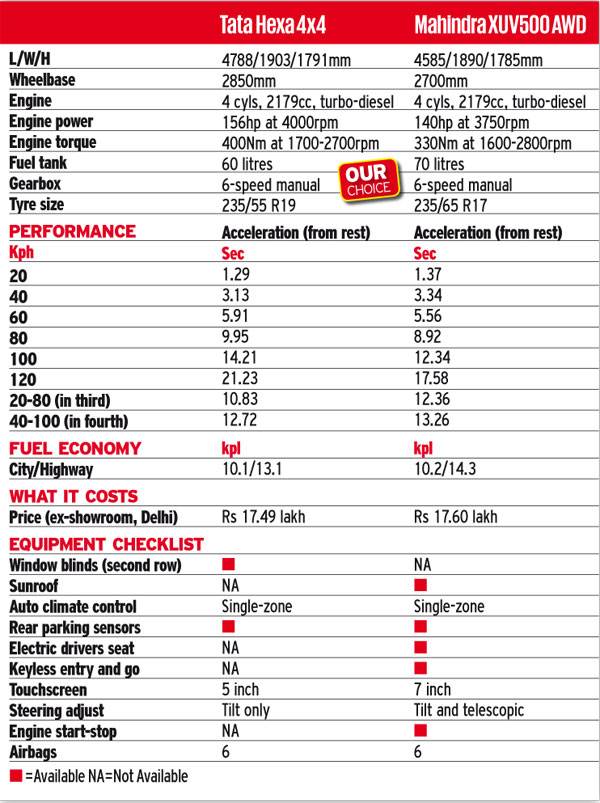

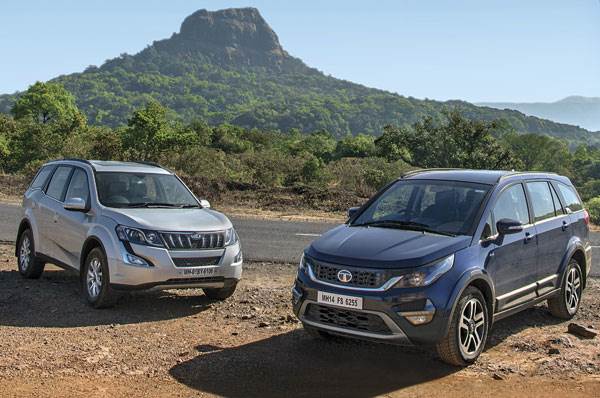
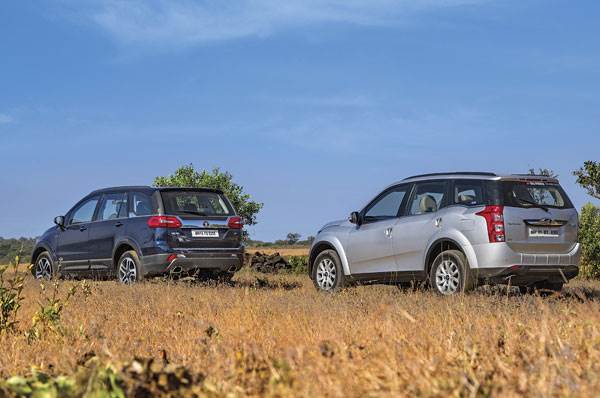
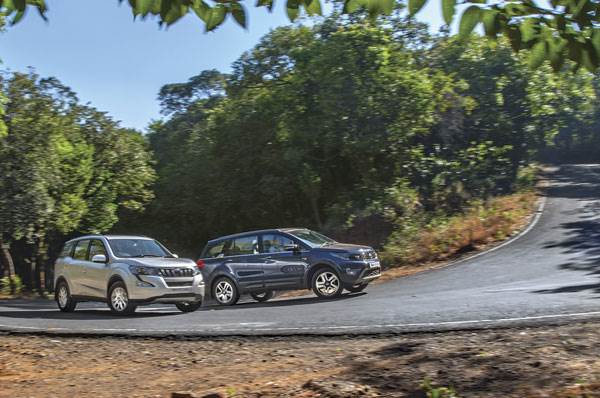
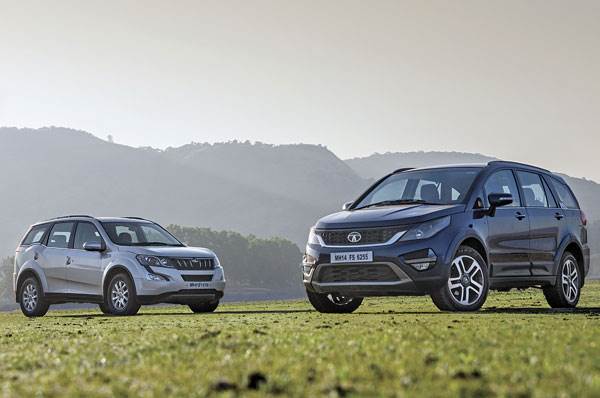

Comments
Member Login
Personal Details
No comments yet. Be the first to comment.